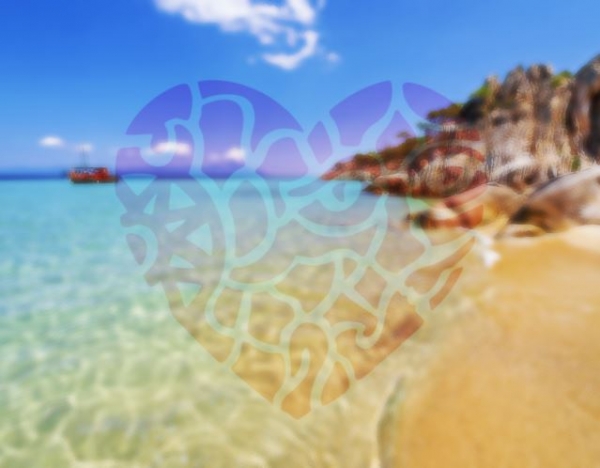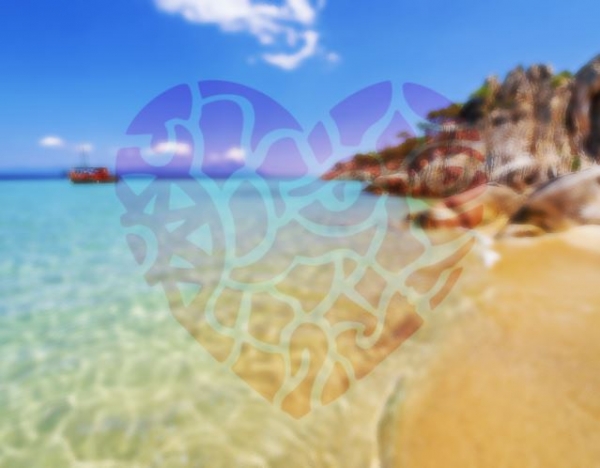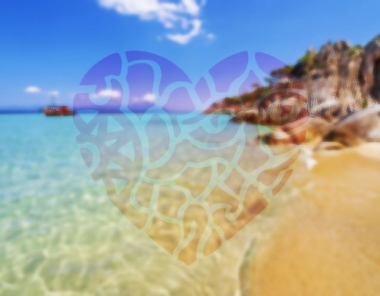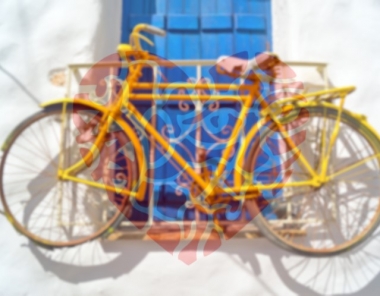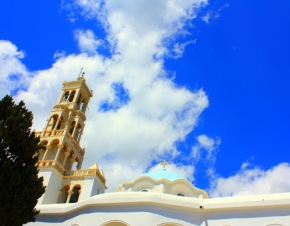Santa Margarita beach is in the eastern part of Tinos.
It is a fairly quiet sandy beach, ideal for those seeking tranquility. The beach got its name by the Catholic church Santa Margarita located in the area and has crystal clear waters to have a swim.
Lychnaftia is in the eastern part of Tinos island.
Lychnaftia beach is strewn with large and small pebbles. Its crystal clear waters are ideal for a lovely swim overlooking Mykonos, while here you will also have the natural shade by tamarisk trees.
Tinos is a very special island. The majority of visitors stop in Chora and Our Lady of Tinos, but the island has a lot more... In the hinterland you will find hidden treasures, namely its beautiful picturesque villages.
Besides Pyrgos, in the northern part of the island you will find Isternia, Kardiani, Platia and Venardado. Each of them has its own characteristic, yet they all share the extraordinary energy and wild beauty of Tinos that cannot be tamed or labeled.
In the southern part of the island, called by the locals "Kato Meri" (Lower Parts), you will find most villages each with its own special feature. Volax stands out with its impressive, lunar-like landscape, together with Kambos, where there is Tsoklis museum. The now deserted Loutra village is also interesting, hosting the School of Ursulines.
And these are just a sample. Aetofolia (=Eagle Nest), Kalloni, Komi, Perastra, Smardakito, Tarampados, Hatzirados, Arnados, Falatados, Xinara, Krokos(=Saffron), Agapi (=Love) and many many more villages wait for you to discover their remarkable hidden beauties. If you happen to visit Tinos, it is worth exploring the picturesque villages of the island either with your own vehicle or on foot (if you can handle hiking). Tinos island is a lot more than religion and the lovely villages are living proof!
Pyrgos is in the northern part of Tinos.
Meaning "Tower", it is the biggest village of the island at a 25 km distance from Chora. Pyrgos is a beautiful traditional village with gorgeous houses and sculptures, which pop up at every corner as if it is open-air museum. Birthplace of the leading sculptor Giannoulis Halepas and the painter Nikiforos Lytras, Pyrgos is a village deeply linked with art. Wander in its narrow alleys, visit the Panormos Artists' Museum, the Giannoulis Halepas Museum and the Museum of Marble Crafts.
Upon arriving in Tinos by boat, the first you see is Chora, the capital and port of the island.
Unavoidably, the religious character dominates in Chora and Evaggelistria Church, the world-famous Lady of Tinos, is the main attraction. Following the footsteps of thousands of visitors, go up the avenue that will lead you to the temple where the famous miraculous Christian icon is held. Take your time to explore the Church but do not limit yourself to this very important attraction, as there are a lot more to see and do in Tinos. Get lost in the narrow streets and discover the island's hidden beauties and marble sculptures. Especially if you are a fun of architecture, you will be amazed by the several spots decorated my marble sculptures or syntheses including taps and fountains, homes and walls. Do not miss the Archaeological Museum of Tinos and the interesting shopping area where you can buy handcrafted items and souvenirs of all kinds.
Regarding the usual holidays requirements and expectations (accommodation, food, drink), in Chora you will find excellent hotels and guest houses, restaurants, taverns, cafes and bars to satisfy our every need.
Findings indicate that Tinos had already been inhabited since prehistoric times. The Carians are considered to be its first settlers coming from Asia Minor with Tino as their leader, from whom the island took its name.
During the Classical Age, the capital city was located near the sea, in the wider region of what we know today as Chora. The Sanctuary of Poseidon in Kionia was an important religious center until the 3rd century BC.
Yet, little is known about Tinos until 1200. By then, the remaining residents had moved inland to avoid the frequent pirate raids. In 1207 the island passed to the Venetians. It is then that Gkizi brothers assumed the island's governance, built a castle in Exomvourgo and Tinos begins to live better and certainly safer days. The castle remained impregnable until 1715 when the island was occupied by the Turks. Following on, Exomvourgo was deserted and the capital transferred to Chora, where it is until today.
In 1821, Tinos rised up together with the rest of Greece against the Ottoman Empire and Pyrgos village was the first in this initiative. The Icon of the Immaculate Conception that was miraculously discovered on the island was considered to be a divine sign thereby raising the Greek morale during the Revolution. Faithful people from all over Greece and Greeks abroad made donations for the construction of the Church of Evangelistria, better known as Lady of Tinos. Since then, the island's history is intertwined with the Lady of Tinos.
Shortly before the outbreak of the Greek-Italian war in mid-August 1940, an Italian submarine torpedoed at the port of Tinos the warship "Elli" that was taking part in the celebrations for the Assumption.

